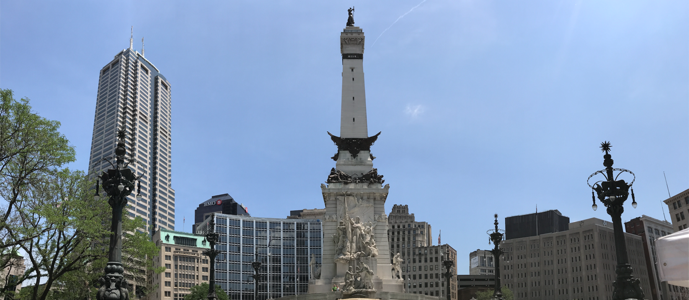On the Ground: BRM Operations at Purdue

As the regional ambassador for North America for the BRM Institute and a BRM Leadership coach, I meet a lot of different Business Relationship Managers and their teams. Recently, I traveled to Indianapolis and Purdue University, where I had the pleasure to meet several BRMs.
During the first evening of my trip, I attended a gathering of the Indiana Community of Interest (CoI). While there, I presented the Knowledge Path to Success and facilitated an “Ask Me Anything” session with the 18 BRMs in attendance. We discussed topics around value, value measurements, executive briefs, and organizational changes. Informal discussions among BRMs in relaxed environments often inspire some of the best idea generation and this evening followed that trend!

Peter Lijnse
Leadership Coach | Speaker | Facilitator – Lead The Pack Consulting
The next day of my trip, I visited the BRM team from Purdue. They strive to build a relationship with the College of Agriculture faculty and ensure that technology provides value for academic activities. We toured several business units to discuss how technology changes their work. Due to this visit, we believe the BRM Team at Purdue should be proud to use the label #IamBRM. Below, we cover a few poignant examples.
In the Corn and Soybean Innovation Center, the focus relies on ensuring that automatic data capture instead of relying on researchers to capture it manually. One machine alone sorted different colors of corn while also capturing kernel size information. In the past, this was done by hand. Now the data becomes quickly available by moving it through the machine. Also, retrofitted farm equipment and Unmanned Aerial Vehicles (UAVs) take images of fields to capture information for research. The high data storage requirements beseech IT to look at edge computing to ensure local, before university, processing. IT needs to remain near business innovation to ensure sufficient support of education initiatives.
We also toured two different areas of the facility. One of the areas focuses on piloting and auditing food processing. Afterwards, the provided data set allows companies to install the processing equipment. The new additional facility, Controlled Environment Phenotyping Facility, focused on automated phenotyping. Plants pass through different imaging systems to gather information on their growth. This information relies on controlled environment climate factors. We thoroughly enjoyed seeing how automation aids research at Purdue. Additionally, each plant generated 4Gb images, which required IT again to support the data requirements.
Takeaways
Observing a BRM team actively building strategic relationships with faculties, and generating results proved truly inspiring. During the open house, for instance, the BRMs interacted with researchers, staff and the interim dean. I believe new ideas formed about how IT could further aid the faculty. At the end of the day, I sat down with the team and recorded a podcast episode to be published in the next couple of months. I am grateful for valuable opportunities like this to see BRMs in action.
